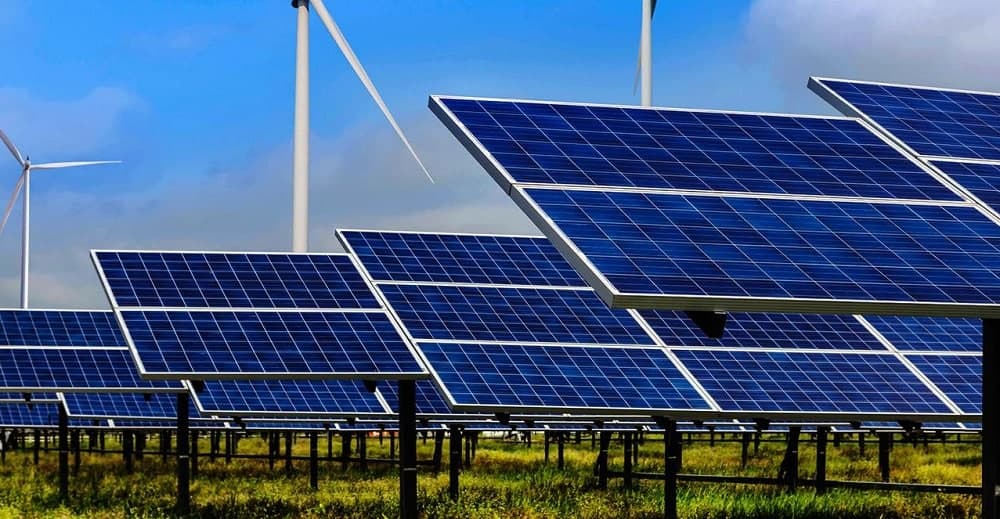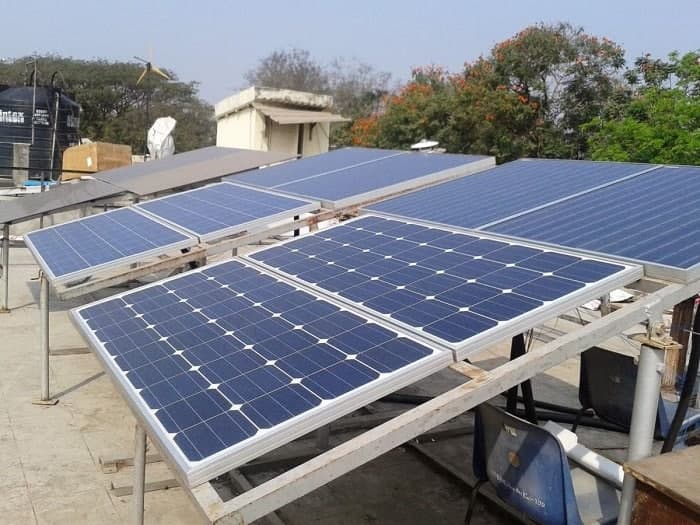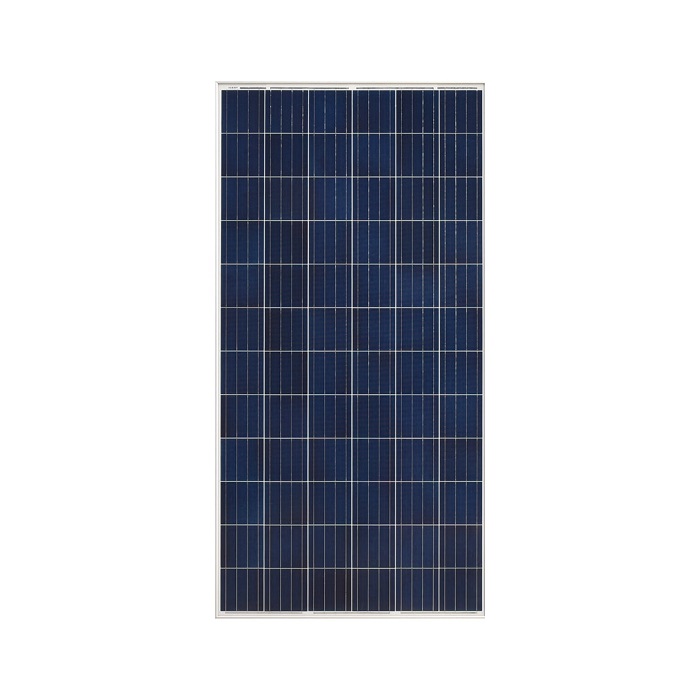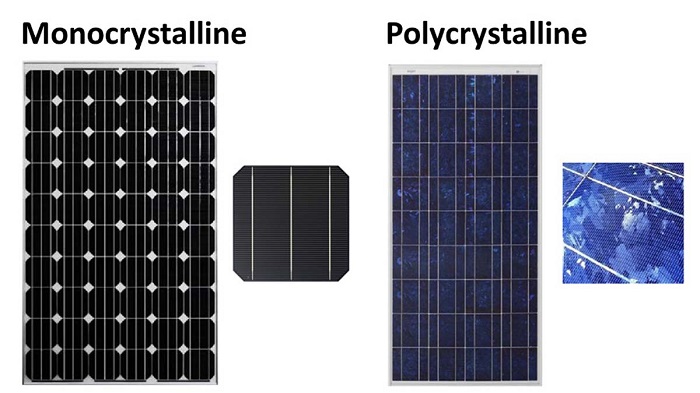The solar panel is one of the most fundamental infrastructures of the whole solar system technology. It has improved over the years, and a range of innovative solar panels are now available in the market. When you evaluate solar panels for your photovoltaic (PV) system, you will encounter two main categories of panel options: Monocrystalline solar panels and Polycrystalline solar panels. Both types of panels supply energy from the sun, but it is crucial to consider the differences between monocrystalline and polycrystalline solar panels before making the right decision in the early stages of project management, especially in macro projects that need an accurate feasibility analysis. Read this new blog in Linquip to find out more about them.
Monocrystalline Solar Panels
As you may know, all solar panels consist of silicon solar cells. The silicon is made when a silicon seed is placed in a vat of molten silicon. The main difference between solar panels is the type of silicon cell they use. Monocrystalline solar panels have solar cells made from a single crystal of silicon, while polycrystalline solar panels have solar cells made from many silicon fragments melted together.
Monocrystalline solar cells are the most popular option on the market, as well as the most efficient form of solar cell. They are among the oldest and most dependable ways to produce electricity from the sun.
As the name implies this type of solar panel is unique in its use of a single, very pure crystal of silicon. You can find monocrystalline solar cell panels in a variety of shapes and sizes, including fixed solar panels and portable solar panels.
One of the reasons people tend to choose monocrystalline solar panels is because of how they look. The solar cells within monocrystalline panels are a single, flat black color, which makes them popular among homeowners. Looking at monocrystalline vs polycrystalline solar panels, you can see that monocrystalline panels have a smoother more uniform appearance than polycrystalline panels.
Now let’s take a look at monocrystalline solar panel specifications:
- It is molded from the molten silicon extracted from the quartz crucible
- It has a typical black coloring and is the preferred choice when there is a limited surface available to build a solar PV system
- The shape of each panel is square with the missing corner on each side
- One square meter of monocrystalline solar cells will generate around 190W
- On average, it cost $1 to $1.50 per watt for the panel
The Pros and Cons of Monocrystalline Solar Panels
While they are the most efficient solar cell on the market, several advantages and disadvantages come with monocrystalline solar panels, each of which is listed below.
Advantages of monocrystalline solar panels
- The highest level of efficiency at 17% to 24%
- Require less space compared to other types due to their high efficiency
- Last the longest, a 25 to 35 years warranty
- Optimized for commercial use
- Perform better in low levels of sunlight, making them ideal for cloudy areas
- Reduce the amount of electricity needed from local power plants
- Reduce the use of limited fuel sources and greenhouse gases in the environment
- Can be easily and without great effort installed, and Its maintenance effort is low
Disadvantages of Monocrystalline Solar Panels
- The most expensive solar cells on the market
- The performance levels tend to suffer from an increase in temperature
- A lot of waste material
- Circuit breakdown when the solar panel is covered with dirt, shade, or snow
Monocrystalline Solar Panels for Sale
Because of the way they are manufactured, monocrystalline solar panel price is more than other kinds of solar panels. Their high efficiency and power ratings also bump up the price. The best monocrystalline solar panels are also some of the most efficient solar panels on the market.
- SunPower
- LG
- Panasonic
- Solaria
- Upsolar
Polycrystalline Solar Panels
The introduction of the first solar panels based on polycrystalline silicon to the market was in 1981. Polycrystalline solar cells are blended from multiple pieces of silicon. They are also referred to as “multi-crystalline,” or many-crystal silicon, and they are popular among homeowners looking to install solar panels on a budget. Polycrystalline solar panel price is between $0.90 and $1 per watt for the panel alone.
Polycrystalline Solar Panel Specifications
- Arranged on a rectangular piece of glass
- Typically found in ridged panels
- The blended makeup of the cells gives poly panels many variations of blue color
- The texture and color are uneven
- It has a variegated pattern
- One square meter of polycrystalline solar cells will generate around 180W
- Its life expectancy is about 23 to 27 year
Advantages of Polycrystalline Solar Panels
- The simpler and cheaper manufacturing process
- No silicon waste
Disadvantages of Polycrystalline Solar Panels
- Lower efficiency typically ranges from 15% to 20% due to low silicon purity
- Require a higher installation area
- Lower architecture integration
- Lower temperature coefficient
- Heat can affect their lifespan
- Less efficient in low-light conditions
- Less aesthetically pleasing
Best Polycrystalline Solar Panels
By taking a look at the list of polycrystalline solar panels for sale, they were 30% cheaper than monocrystalline panels. However, the cost difference is much smaller now, thanks to improving technologies and market conditions. If you are on a tight budget for a solar panel system, you can save some money while still getting high-quality panels with polycrystalline solar panels from these manufacturers:
- Trina Solar
- ReneSola America
- REC Group
- Canadian Solar
- Jinko Solar
Monocrystalline vs Polycrystalline Solar Panels:
Now that you have considered the pros and cons of monocrystalline solar panels and the pros and cons of polycrystalline solar panels, it gets easier to make your decision. The following considerations should help you determine which one is the right choice for you.
-
Individual Preferences
If you care about the color of your solar panels, remember that a typical monocrystalline panel will tend to have a darker black color, while a polycrystalline panel will tend to have a bluer color. If you have a personal preference for a particular solar panel manufacturer, you should consider whether they are more popularly known for their poly or mono solar panels.
-
Solar Financing
How you finance your system can also play a part in determining which type of panel you choose. It means that, above any kind of equipment you’re being offered, your monthly payments will determine your savings. By contrast, if you are buying your system, paying more for high-efficiency monocrystalline panels can result in higher returns on your solar investment.
-
Space Constraints
If your available space is limited, you may prefer higher-efficiency solar panels. Because of this, paying the extra cost for more efficient monocrystalline panels that can help you maximize your electricity production will make more sense in these scenarios. Alternatively, if you have plenty of free space available or are installing ground-mounted solar, then lower-efficiency polycrystalline can be a more economical option.
-
Amount of Dust and Snow
According to some industry experts, monocrystalline solar panel systems have been known to break down if they are only marginally covered in snow or dust. Polycrystalline solar panels, on the other hand, are somewhat more resilient in these conditions. Therefore, if you live in a region where the climate is snowy or dusty, you might find polycrystalline solar panels to be a more suitable option.
-
Climate
As discussed in the earlier sections, the heat tolerance of a monocrystalline solar panel is higher than that of a polycrystalline panel. If you reside in a region that has a hotter climate for the better part of the year, this could effectively reduce the lifespan of your panels if you choose the polycrystalline option.
As you see, it depends on your preferences and unique situation. The best way to determine which one may work for you would be to talk with solar specialists. They can advise you on which panels will produce the most energy, most economically, and with the most aesthetic system design.
So, there you have a useful guide to the difference between monocrystalline and polycrystalline solar panels. If you have any points to discuss in this article in Linquip, let us know by leaving a reply in the comment section. Is there any question we can help you with? Feel free to sign up on our website to get the most professional advice from our experts.
Buy Equipment or Ask for a Service
By using Linquip RFQ Service, you can expect to receive quotations from various suppliers across multiple industries and regions.
Click Here to Request a Quotation From Suppliers and Service Providers
Read More On Linquip






